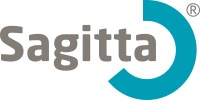A well-known saying states that “lightning never strikes the same place twice”, and this may well apply to diopter glasses. Standard eyewear used at home vs safety glasses used at work.
Our favoured diopter glasses are sometimes not suitable at work where requirements for higher accuracy, quality, speed and safety apply. The production of safety diopter glasses starts with the assessment of several parameters which influence your satisfaction at work.
Optometrists measure the objective and the subjective refraction to define visual acuity.
Measured refraction (visual acuity) must be confronted with the circumstances in the workplace. Think in advance how and where diopter glasses will be used at work. Consider the distances you need to cover, activities, the layout of the office or the workplace, used displays and PC screens, etc. We strongly recommend simulating the most frequent situation and identify the required visual acuity. Take into account whether you work seated or standing, specify the distance from the PC screen, what your movement radius is, consider your job position (forklift driver, crane operator, etc.).
Last but not least, a suitable design of safety frame should be selected. It holds safety lenses with corrected diopter. The frame is eligible if it complies with potential risks in the workplace – flying woodchips, dust, radiation, chemical substances, etc. Adequate size and flexible components guarantee comfort and relief. The Fit Test checks if the glasses fit close to your face.
Summarize the data above and select the optimal solution for good eyesight supported by diopter safety glasses which let us see and protect us at the same time.
